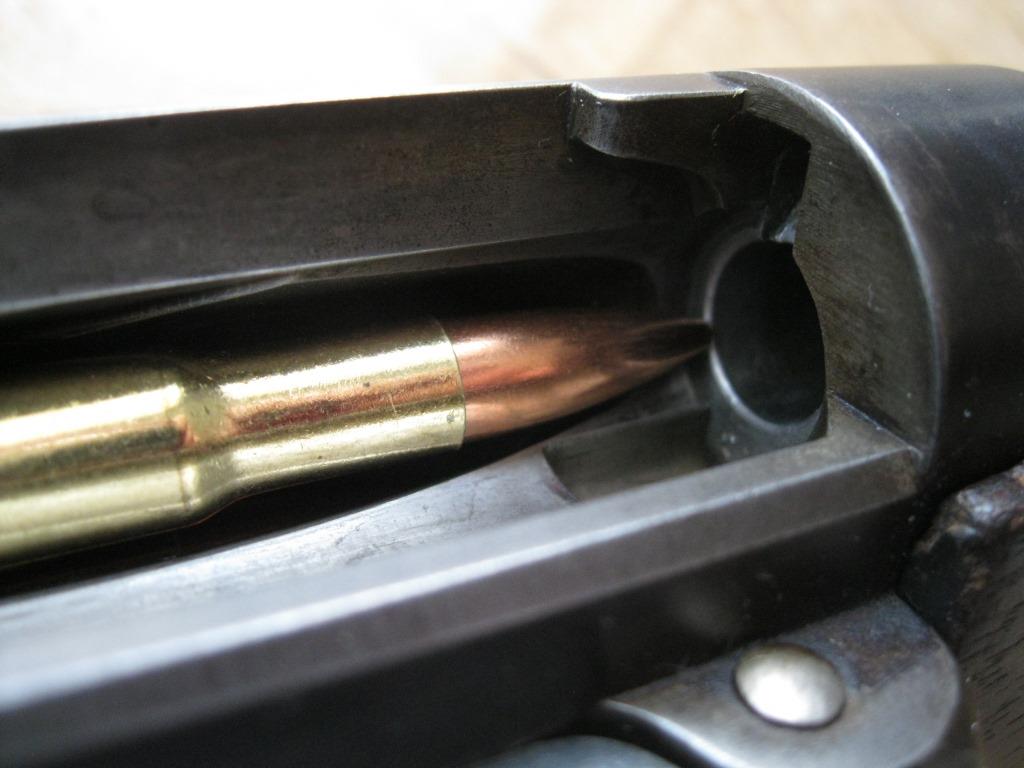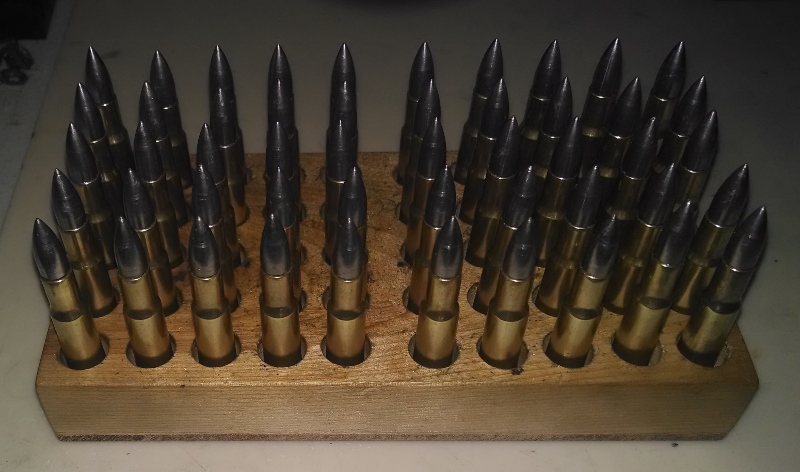Post by butlersrangers on Jul 25th, 2018 at 7:26pm
Hamish:
In my experience, Krags are 'individuals'; there is variability in whether a Krag successfully feeds various bullet profiles.
In theory, if a Krag feeds original 'Ball Ammo', with its 220 grain RN projectile, the rifle is working correctly.
Recently, I was shooting two model 1896 Krags using reloads with 168 grain Sierra 'Match King' projectiles, seated to 3.075" Over-All-Length.
One Krag would feed a full magazine of these cartridges flawlessly.
The other Krag jammed on every round, with the spitzer point catching on the barrel breech, at approximately "8 o'clock".
(Both rifles will feed 180 grain 'Hunting' projectiles and 220 original "Ball" rounds, trouble free).
Receiver sights tighten up groups for most shooters. The 'aperture' size can be changed to allow for lighting conditions. The goal is to look through the 'aperture' and see the front-blade and target clearly.
Attached photos: 1.&2. 168 Sierra Mk reload nicely 'centers' and feeds on this Krag.
3.&4. On this Krag, every round hangs-up on barrel breech.
 IMG_1181.JPG ( 63 KB | 1
Download )
IMG_1181.JPG ( 63 KB | 1
Download )
 IMG_1181b.JPG ( 61 KB | 0
Downloads )
IMG_1181b.JPG ( 61 KB | 0
Downloads )
 IMG_1186b.jpg ( 76 KB | 0
Downloads )
IMG_1186b.jpg ( 76 KB | 0
Downloads )
 IMG_1187.JPG ( 87 KB | 0
Downloads )
IMG_1187.JPG ( 87 KB | 0
Downloads )
In my experience, Krags are 'individuals'; there is variability in whether a Krag successfully feeds various bullet profiles.
In theory, if a Krag feeds original 'Ball Ammo', with its 220 grain RN projectile, the rifle is working correctly.
Recently, I was shooting two model 1896 Krags using reloads with 168 grain Sierra 'Match King' projectiles, seated to 3.075" Over-All-Length.
One Krag would feed a full magazine of these cartridges flawlessly.
The other Krag jammed on every round, with the spitzer point catching on the barrel breech, at approximately "8 o'clock".
(Both rifles will feed 180 grain 'Hunting' projectiles and 220 original "Ball" rounds, trouble free).
Receiver sights tighten up groups for most shooters. The 'aperture' size can be changed to allow for lighting conditions. The goal is to look through the 'aperture' and see the front-blade and target clearly.
Attached photos: 1.&2. 168 Sierra Mk reload nicely 'centers' and feeds on this Krag.
3.&4. On this Krag, every round hangs-up on barrel breech.
 IMG_1181.JPG ( 63 KB | 1
Download )
IMG_1181.JPG ( 63 KB | 1
Download ) IMG_1181b.JPG ( 61 KB | 0
Downloads )
IMG_1181b.JPG ( 61 KB | 0
Downloads ) IMG_1186b.jpg ( 76 KB | 0
Downloads )
IMG_1186b.jpg ( 76 KB | 0
Downloads ) IMG_1187.JPG ( 87 KB | 0
Downloads )
IMG_1187.JPG ( 87 KB | 0
Downloads )
